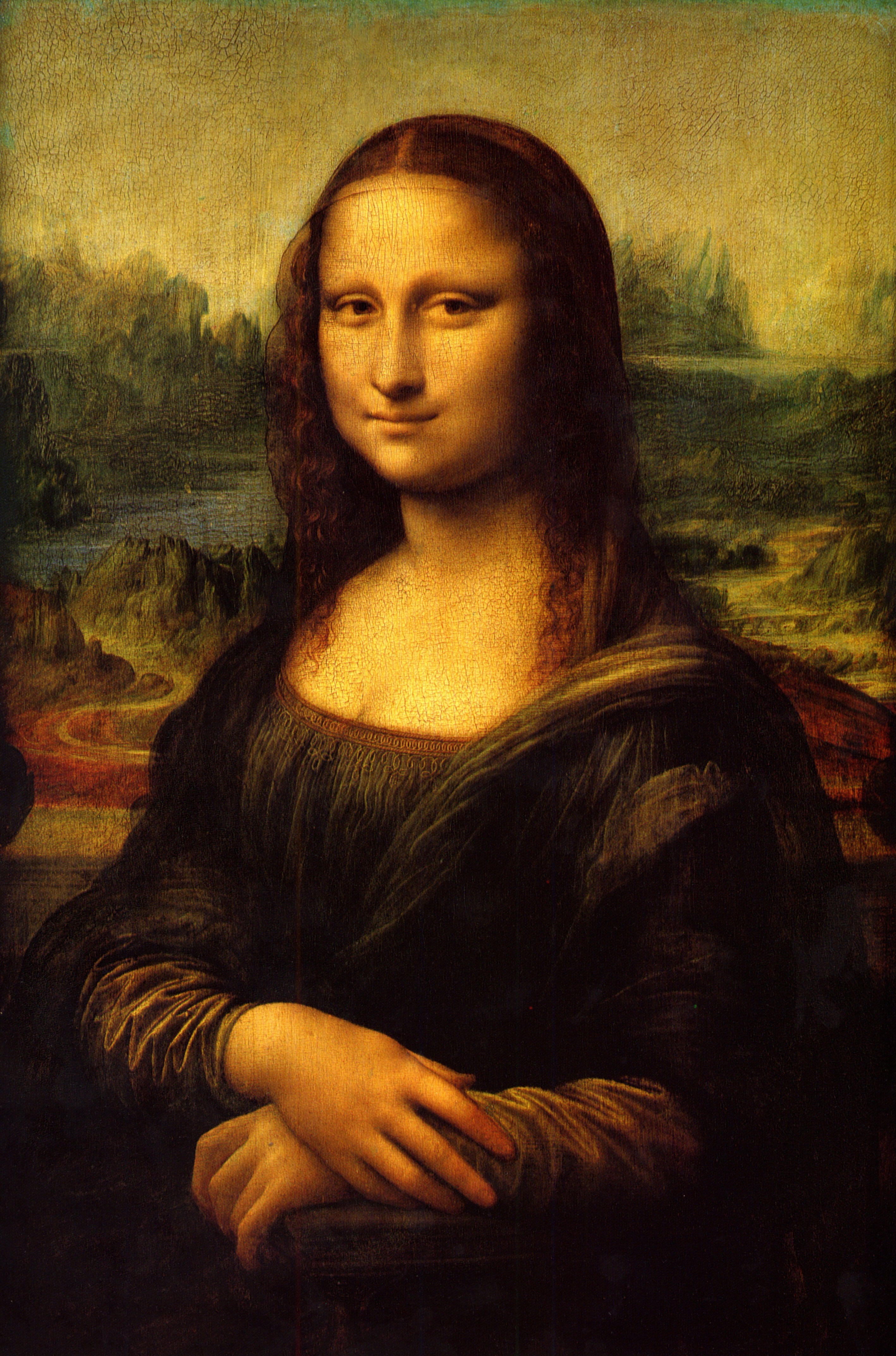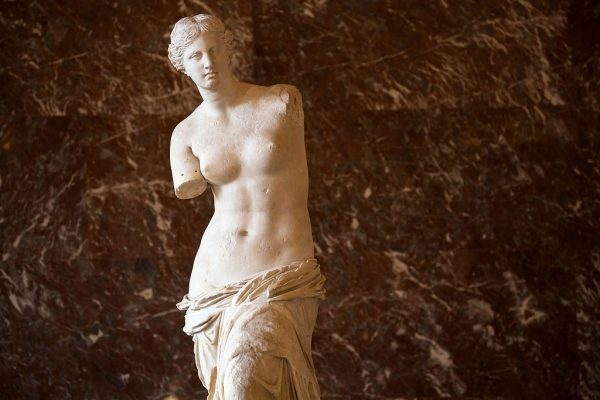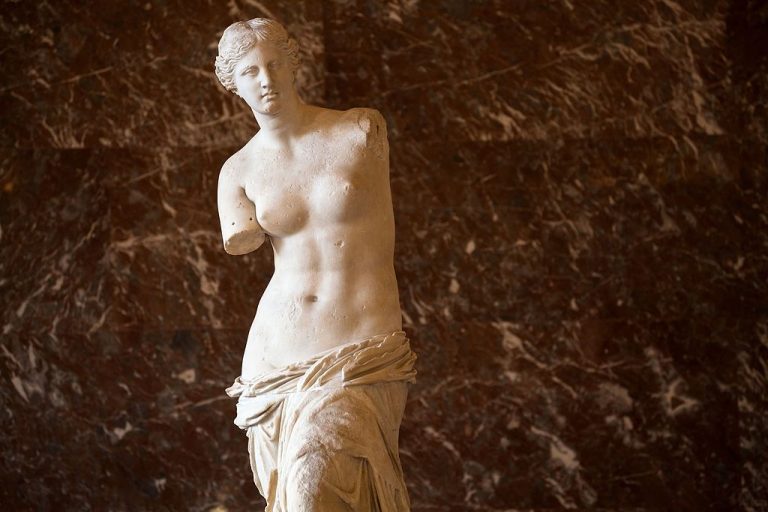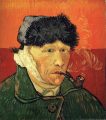What is beauty in art? It’s an eternal question which tests our ideas of history, culture, geography, politics, race, religion, time and place. But the question remains: should art be beautiful? And if it should, what does beauty in art mean?
For those who gaze on artwork, “beautiful” is often one of the most common adjectives you will hear. But does beauty in art matter? And is it something an artist should aspire to?

What is the definition of beauty?
Without resorting to a dictionary, we can define beauty as a quality that attracts us. A visual feast. Something that brings joy or piques interest. A visual and emotional appreciation. But we can be as drawn to ugliness as we are to beauty. Think of a crooked tree next to a perfectly symmetrical one. It’s the warped and twisted branches that leave us contemplating the majesty of nature.
And, yes, beauty is in the eye of the beholder. Culture influences the eye when it comes to defining beauty.
Our concept of beauty changes across history and time zones. There is no all-encompassing theory which can contain the vast complexities and richness of our view of beauty, any more than there is a grand unifying theory of anything.
So, what is beauty? That which we find alluring, aesthetic, foreign, pleasurable, sexual, covetous, inspirational, aspirational, divine, otherworldly and transcendent.
What is beauty in art?
The subject of beauty has always been a thorny one for many artists and critics to wrestle with. It’s in part due to the difficulty of defining beauty. But it also reflects evolving attitudes over time to the place of the role beauty should occupy in our public and private lives and how – and whether – art should embody these rarefied qualities.
We are all routinely affected by everyday beauty: a stunning sunset, a person, or, of course, a work of art. These works will often reflect versions of everyday beauty: a landscape or the human form. But abstract art and 3D art often achieve beauty through color and texture. You are just as likely to hear someone talk of beauty standing in front of a Barbara Hepworth sculpture or a Mark Rothko painting as you are a work by J.W. Turner or Monet.

Is the beautiful inherently complex and contradictory?
But artwork is not one thing or another. Consider Casper David Friedrich’s romantic rendering of Two Men Contemplating the Moon. It’s a luminous composition with two gentle figures communing with nature. Yet there is something slightly gothic about the scene. Nature seems alive and brooding. The tree could be the “whomping willow” from Harry Potter. This painting allegedly inspired Samuel Beckett’s tragi-comic masterpiece Waiting for Godot. A play with the devastating line: “They give birth astride of a grave, the light gleams an instant, then it’s night once more.” Is all of this then beauty?
Is a skull (the ultimate memento mori) a beautiful object when painted beautifully? Damien Hirst’s For the Love of God is a platinum cast of an 18th-century human skull encrusted with 8,601 flawless diamonds and costs $50 million. Does the investment of money make beautiful artworks ugly and vulgar by its association? What about the medium? Mark Quinn’s Self is a self-portrait of the artist, using his blood set in frozen silicone, while Chris Ofili favors elephant dung as a medium.
In recent decades, these artists and their curators have contributed to a cultural conversation about whether cultural relativism fosters a “cult of ugliness” in contemporary art.
A short history of beauty in art
To consider where beauty stands in today’s art, let’s look to historical assessments of beauty in art.
For instance, the man hailed by many as the “father of art history,” Johann Joachim Winckelmann (1717-68), composed his History of Ancient Art long after the art of classical antiquity that he sought to study had been largely destroyed. That absence forced him to rely on the written records of ancient travelers and historians.
Despite this, Winckelmann fervently believed that beauty was not intrinsic to the work of art, but arose from a collaboration between the work and the viewer. His texts reveal a passion for beauty as a characteristic emerging from prolonged contemplation and reflection. These include his assessment that “the first view of beautiful statues is… like the first glance over the open sea; we gaze on it bewildered, and with undistinguishing eyes, but after we have contemplated it repeatedly the soul becomes more tranquil and the eye more quiet, and capable of separating the whole into its particulars.”
The journey to find beauty in the unfamiliar
Of no less relevance to today’s art lovers than to Winckelmann’s 18th century counterparts, he noted that he had “imposed upon myself the rule of not turning back until I had discovered some beauty.” He urged students to approach works of Greek art “favorably prepossessed… for, being fully assured of finding much that is beautiful, they will seek for it, and a portion of it will be made visible to them.”
Did the Conquistadores value pre-Colombian art in the same way as they valued Velasquez? What is more beautiful: Velasquez’s Portrait of Innocent X, or Francis Bacon’s homage to Velasquez (his favorite painter), one of his “screaming popes” terrorized and contorted in an existential hell? Look at those purples in Bacon’s pope’s vestments and how beautiful they are.
Would the Hellenistic mindset have found beauty in Moai statues? Did those artists in Paris at the beginning of the 20th century only discover a crude, untamed ugliness in those incredible artifacts plundered from the peoples of Africa?
For centuries, European and American art neglected Winckelmann’s insights on beauty. Instead of recognizing and celebrating the exquisite beauty in the arts of Africa, Asia, Latin American and the Pacific, these works were simply plagiarized and manipulated, while the inspiration was erased and denied.


What other artists think of beauty
Even putting aside JJ Winckelmann’s call for a sustained search for beauty even in those artworks that may not seem to yield it, there is plenty of reason for optimism about the role of beauty – or the lack of it – in the art of today.
Beauty has, for one thing, re-entered the critical conversation in recent decades. The Dutch artist Marlene Dumas (born 1953), for example, has mused that “one cannot paint a picture of or make an image of a woman and not deal with the concept of beauty.”
Fellow artist Agnes Martin (1912-2004), meanwhile, signaled her appreciation of beauty as existing in the present moment of the viewer’s judgement, when she declared in her 1989 essay “Beauty Is the Mystery of Life”: “When a beautiful rose dies, beauty does not die because it is not really in the rose. Beauty is an awareness in the mind. It is a mental and emotional response that we make.”
What do critics say about beauty?
As wordsmiths, art critics can often describe beauty better than us mere artists. Drawing these battle lines are such critics as JJ Charlesworth and Jonathan Jones. The former has reasoned that “beauty is one of those ideas that over the past 100 years or so has been slowly downgraded when it comes to considering the value of art… if anything, we [now] regard humanity as pretty ugly.” Jones, meanwhile, has suggested that “the rejection of beauty as a creative ideal began not with modernism, but when modern art started believing its own press.”
And I finish with the controversial example of Immersion (Piss Christ). This photo of a cheap plastic crucifix submerged in artist Andres Serrano’s own urine caused huge criticism, not least causing him to lose a valuable tax-funded art prize. But critic Lucy R. Lippard describes it as mysterious and beautiful. The controversy continues (In October 2022 the work sold for £130,000).
The beauty in ugliness and the ugliness in beauty
Do we still think of people with disabilities or deformities as unable to be beautiful? If I paint someone with a skin disease is it an ugly portrait? Is it degenerate art? Or shocking art? Or is it a dignified portrait of a beautiful soul, who appears a little different, physically speaking, to many others. Does your nude self-portrait conform to ideas of the body perfect?
There can also be a beauty in ugliness and an ugliness in beauty. Think Giacometti’s skeletal figures, or the grand drippings of paint in Pollock. What of Warhol’s Death and Disaster series? What of Goya’s Disasters of War? Are Jeff Koon’s slick balloon dogs beautiful or ugly? Are they profound, or merely gaudy baubles for the rich to dump on their perfectly manicured lawns?
There are moments in many artworks which we may consider ugly and parts which we may consider beautiful. Perhaps the subject matter is unpleasant, but it is rendered beautifully in the medium of choice. A great example is Salvator Rosa’s painting in the National Gallery in London, Witches at their Incantations. It is a macabre scene of human desecration, yet the reds in the painting are some of the most beautiful you will ever see.
Regardless, the iconic artworks of recent decades shows us that beauty in art is by no means long gone. For example, Irish artist Mary Duffy’s evocations of statues like the Venus de Milo reveal the beauty of her own body. Equally, Greek artist Jannis Kounellis’ (1936-2017) juxtaposes fragmentary casts of ancient sculpture within a modern doorway for 1980s Untitled to explore concepts from identity to the immortality of art.

Should your work be beautiful?
So does beauty in art really matter? To use the firmest of clichés: beauty is fleeting. We would countenance today a cultural, moral, political and social attitude very different from those held by people in the past. That would take precedence across the globe.
Once, capturing beauty was a key part of an artist’s role, but what about today?
The young will not tolerate the same prejudicial attitudes towards race, culture, gender and sexuality, for instance, as their forbearers did. In the most progressive of circles today, black is as beautiful as white. Is there anyone more beautiful than Beyonce? A transgender woman is as beautiful as a cis-gender woman. Is there anyone more beautiful than Monroe Bergdorf?
They are all as worthy of revelation, contemplation and celebration as each other. The hierarchical of the past are the heterarchical of the future. All are created equally beautiful.
Is beauty a myth or is it real? Is it identifiable, quantifiable, qualifiedly, marketable and saleable. Billionaires purchase it in abundance. Does it make them more beautiful for doing so?
In the end, beauty in art is a fluttering of the eye, a shivering of the skin, a shudder in the intellect. It is that moment when the soul swoons, or the heart sinks, in being, or elation, or wanderlust. A brief instant in collaboration with the senses: a glimpse of melancholy, or pulse of nostalgia. It is a movement, a pause, a glimpse, a beat. It is everything and it is nothing. A moment when we appreciate it all and then contemplate none of it. Beauty is fleeting, regardless, defiant, vulgar and aloof. It is worth knowing once and worth dying for twice.
As an artist, we all have our own ideas of beauty and how to render that on canvas. Perhaps the only question worth asking is do you want beauty in your work?







